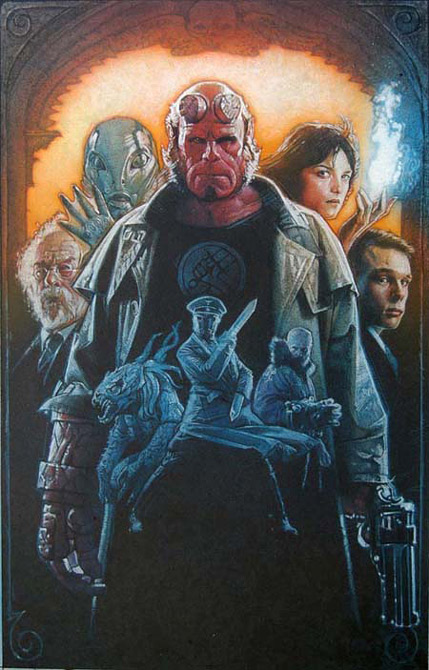A gorgeous new book about the movie poster work of Drew Struzan The Art of Drew Struzan, has just been released by Titan Books. It’s written by David J. Schow, book and film writer, and Struzan himself. It’s visual chocolate for every lover of movie posters, and every type of working and wannabe illustrator.
What’s great about it is not only obvious from the perfect reproductions of many of Struzan’s best paintings for many of the film industry’s box office monsters, but it’s full of his preliminary sketches and even better, his frank and honest comments about working on each piece. It’s an insider’s view of film production from the artist’s perspective.
I worked as a poster artist about the time that Struzan became the go-to guy. We all marveled at his ability to capture likeness’s with such simple grace. Working on movie posters in the 1980s was a maddening process. Hollywood can drive an artist insane. I’ve experienced the madness that art directors can reach trying to please the ‘suits’. Hollywood promises all, and delivers only the numbers. But Struzan kept his head in the work. He tells it straight up. Even though he experienced the same mind-bending ping-pong decision making, he weathered it, and kept producing.
In the early 80’s, when Drew’s work took off and became The Look to imitate, every art director asked if an illustrator could “make it look like Struzan.” His work was so wonderfully real, it was the perfect combination of loose art and tight detail. It captured the feel of photography and the kind of realism the studios wanted. In a way, Drew’s work actually helped push the last remaining holdouts from illustration to photography. The studios finally figured out that because film was a photographic medium, movie posters should reflect that. Even so, Drew continued to turn out fabulous montages.
I was immediately caught up in listening to him talk about working with Lucas, Spielberg, et al. It’s a real-life description of working with directors who work with gigantic budgets, teams of people hanging on their every word. Movie stars with control of their images. Directors that make decisions to spend money on art, only to turn around and have a producer cancel all of it, in favor of photography.
Drew is up front about his attitude, his working methods, his working relationships with mega-directors. All without pretense. His approach is so humble, one would think that he would’ve been taken advantage of more often in that environment. To be sure, he worked out so many sketches, searched for the right balance and tone, it’s daunting. He comes across as a true professional with the heart of a fine artist.
As the book progresses we follow him through the projects as he reaches a level of burn-out. The work never skips a beat, though, or misses a moment of beauty. Not one misstep to my eye.
Only a couple of regrets about the book for me. As an artist I want to get up close, like I do at the museum, and look into all the luscious line work. And even though it would be too cumbersome to show all of his work through the years, I missed seeing a few of my personal favorites.
This is how art books should look. Show the process of the artist along the way to the finish. Present what the artist was thinking, show sketches, dead-ends, the process of their creation. Listen to them speak. Then step back and stun the reader with an exquisite example of the finish.
The book’s a page-turner, simply designed and beautifully presented. The introduction itself, by writer-director Frank Darabont, is a sarcastic, honest, and much appreciated plea for the return of real poster art. And hearing Drew explain how he got there is liberating.



B&W images © Copyright Drew Struzan / All Right Reserved
Color image © Copyright Columbia Tristar 2003 All Rights Reserved, Used by Permission
Greg Manchess is an artist and writer working in New York and Portland.











